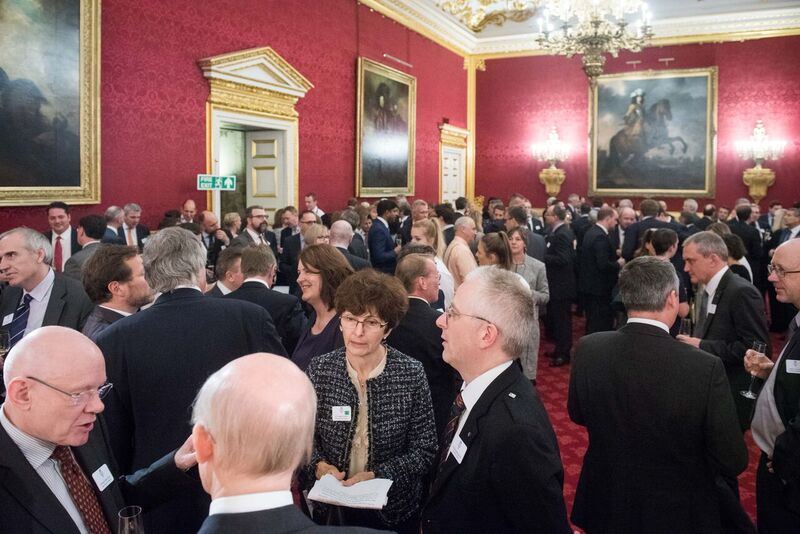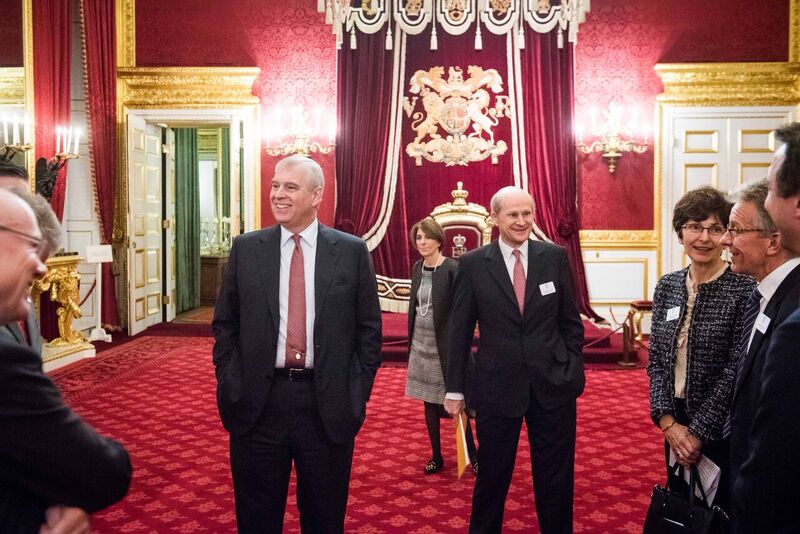On 18th October His Royal Highness the Duke of York, as patron of the Harwell Campus, hosted a reception at St James’s Palace in London, both to celebrate a series of important new investments at Harwell and to highlight opportunities for future developments.
The event focused on the way in which innovation is stimulated by collaboration across different disciplines and industries, as well as between academia and the private sector. More than 150 people took part, drawn from organisations belonging to the three clusters that have now formed at Harwell and from external companies operating in related sectors.
Speaking for the well-established Space Cluster, Magali Vaissiere, Head of the ESA’s European Centre for Space Applications and Telecommunications, referred to the recent award of £99 million from the UK Government’s Industrial Strategy Challenge Fund to expand the existing RAL Space test centre into a National Satellite Test Facility. This reflects the way that the facilities at Harwell reinforce the rapid growth of the space sector across the UK. The space cluster at Harwell itself has now grown to more than 75 organisations; and many of these have generated cross-sector innovations that are of interest to other sectors, such as health.
Professor James Naismith, Director of the Research Complex at Harwell, represented the HealthTec Cluster that was formally established at Harwell last year and now employs more than 1,000 people across 40 organisations. Its most recent addition is The Rosalind Franklin Institute (RFI), of which he is interim co-lead. This UK government supported initiative brings £100 million to a hub-and-spoke partnership of ten UK universities and 240 scientists across life sciences, physical sciences and engineering. It aims to develop new treatments through imaging life in motion at all scales, from atoms to organs; and to do physical science experiments that transform Life Sciences. Harwell, with its unique facilities of electron microscopy, lasers, synchrotron and neutron source, is the ideal location to host the RFI Hub, facilitating the partnerships with industry that are vital to its success and using the hub and spoke model to maximize benefits to the whole of the UK.
The newly formed EnergyTec Cluster was represented by Professor Peter Bruce, Wolfson Chair of Materials at Oxford and Chief Scientist of the new Faraday Institution, which is being set up at Harwell by another collaboration of seven leading UK universities. It is part of a £250 million government investment focused on energy storage and battery technology, which are vital not only to improve electric vehicles but also to store the electricity from intermittent sources of renewable energy. The Faraday Institution was attracted by the way that Harwell mixes large multinational companies with SMEs and start-ups, providing the vibrant entrepreneurial environment that is needed to take breakthroughs in the science of energy storage to market.
In each of these cases, many of the personnel involved will be based at other locations but they will come to Harwell to conduct R&D using the unique facilities available there. This, together with the presence of organizational hubs such as ESA and the HQs of the RFI and Faraday Institution, will facilitate the cross-sector contacts that are vital to sparking innovation. In this way the growing community of clusters at Harwell Campus will engage right across the UK, bringing benefits to multiple sectors of the economy.
For further information contact Alan Brunstrom: alan.brunstrom@esa.int






